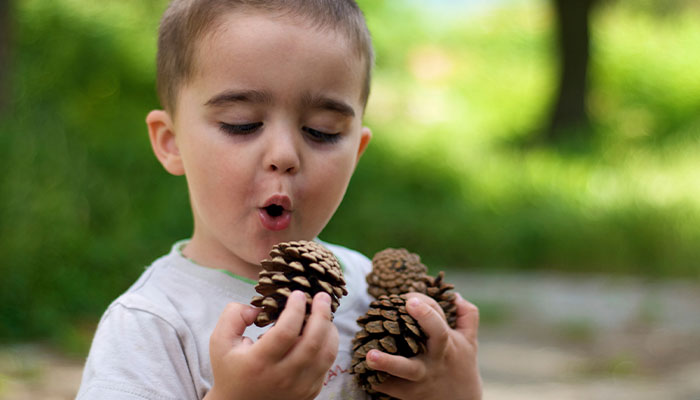While we believe that the books and resources recommended may be of value to you, keep in mind that these are suggestions only and you must do your own due diligence to determine whether the materials are appropriate and suitable for your use. PNC has no sponsorship or endorsement agreement with the authors or publishers of the materials listed.
FALL

Nuts and Seeds
Children will learn about seeds and nuts in the fall.

Lesson Objective
Children will learn about seeds and nuts and will explore how trees produce them.
Science
What You'll Need
- Time for a walk outside
- Resealable plastic bags (quart size) – one per child, labeled with their names
- Masking tape – 1 roll
- Permanent marker
- Magnifying glasses – 1 per child
- Water in a spray bottle
What To Do
- Take your class outside to a shady area.
- Explain that each season, there are many changes in nature. Trees and plants experience many changes. Some trees drop seeds or nuts on the ground so that new trees can grow from them.
- Tell the children that they will be looking on the ground for seeds and nuts.
- Distribute the plastic bags, labeled with each child’s name.
- Take a slow walk through an area with a good number of trees. Invite the children to collect any nuts or seeds that they find. Each child only needs a couple of seeds or nuts.
- When you get back to the classroom, distribute magnifying glasses.
- Have the children take one of the seeds or nuts out of their bags to examine (see Guiding Student Inquiry). Provide assistance in opening the seed or nut if they would like to investigate the inside of the seed.
- Spray some water into their bags with the remaining seeds, and close the bags securely. Then, tape each one to the window.
- Have the children observe the bags each day and record their observations. You can create clipboards for them using cardboard and paper clips. Children can draw pictures of what they see each day.
Resources
Home School Resources
Home educators: use these printable lesson PDFs to teach this lesson to your home schoolers. They're available in English and Spanish.
Content Provided By
Common Core State Standards Initiative – These lessons are aligned with the Common Core State Standards ("CCSS"). The CCSS provide a consistent, clear understanding of the concepts and skills children are expected to learn and guide teachers to provide their students with opportunities to gain these important skills and foundational knowledge [1]. Visit the CCSS


